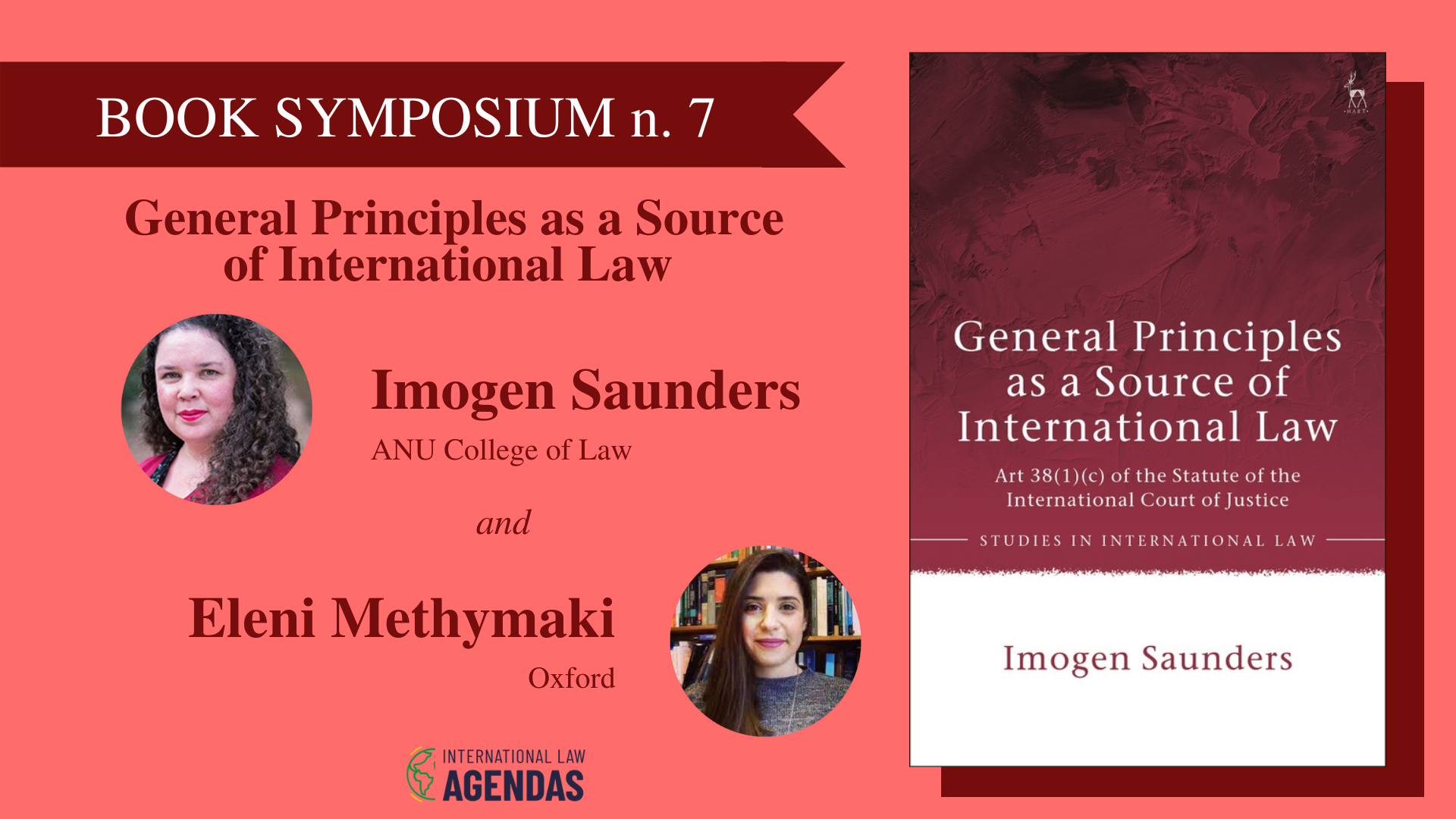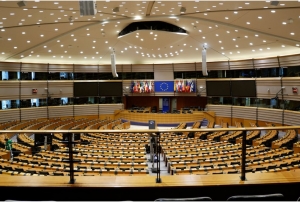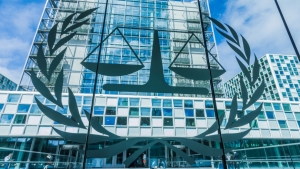Introduction
The idea that we need to rethink the relationship between the domestic and the international has gained popularity in the last few decades. Studies on the engagement of domestic legal orders, including domestic courts, with international law have proliferated rapidly, and—albeit in a slower pace—so has research on the engagement of international law, and international courts and tribunals, with domestic law (eg, ILA Study Group; see Clark, 2020, Introduction, with references). Imogen Saunders’ General Principles as a Source of International Law is a valuable contribution to this body of scholarship, general principles of law under Article 38(1)(c) of the Statute of the International Court of Justice (and beyond) being one of the main avenues through which interaction of international and domestic law can happen (similarly Ellis, 949).
General principles of law have been something of an enigma for international lawyers for a long time (similarly Redgwell, General Principles of Law, Introduction). Identifying as a problem ‘the lack of a clear and accepted model’ (3) for this source of international law, Saunders’ project is ambitious: ‘to create a model of General Principles that is consistent and justified on the basis of the historical development of the source, the treatment of the source by key international institutions and international legal theory’ (3). Focusing on ‘understanding the source itself’ (4), she puts together a framework of four elements: function, type, methodology, and all of them underpinned by jurisprudential legitimacy (a ‘tetrahedron’–Chapter 1). She then applies this to the analysis of the cases in four succinct chapters (Chapters 3–6), and employs it to construct a model for ‘global general principles’ (Chapters 8–9).
In the rest of this post, I will bring forward two features of Saunders’ book: first, the (justified) insistence that to be able to understand general principles of law as a source of international law (and, arguably, to pursue any intellectual inquiry meaningfully), we need to take care in how we approach our research material; second, the invitation to the readers (and other researchers) to think what ‘truly global’ general principles can offer to international law (Chapters 8–9).
A plea
‘Nations, international institutions, domestic law, international law, treaties, custom, legislative enactments, domestic court judgments (…) come with origin myths attached, as well as maps and genealogies that we learn in university’ (Johns, The Fluid State, 189). These origin myths produce certain narratives about the normative relationship of the international and the domestic legal orders, that often eschew the complex ways in which the international and the domestic inform one another (to say the least). Such narratives are perpetuated through the misuse of international courts and tribunals’ pronouncements to support this or that position about the sources of international law and the role of domestic law in international adjudication. Saunders is very aware of this and repeatedly draws attention to the ‘unfortunate’ citation of cases, not justified by the actual pronouncements of the court or the individual judges concerned (e.g., 88, 208).
For her part, the author has taken great care in analysing almost 100 judgments and individual opinions of the PCIJ and the ICJ, and a select number of decisions from other international jurisdictions (Chapters 3–6). These include both decisions helpful in the construction of her model and—equally important—decisions that are commonly misconstrued as supporting a particular viewpoint on general principles, and which tend to be repeated in scholarship, producing and re-producing misunderstandings about the source itself (89). Reading the material in light of their context, previous caselaw, the parties’ pleadings, and often the individual judges’ extracurial work allows the author to ‘separat[e] the “wheat” (the proper use of General Principles) from the “chaff” (the misuse of the General Principles)’ (54), and highlight cases of ‘the most egregious misuse’ (55). As much as anything else, Saunders’ work can be read as a plea for precision and clarity in our own research work; in our study of the domestic and the international, that would allow us to move beyond the modalities of any particular source of international law and towards a more systemic understanding of the interaction of the different legal orders, its possibilities and limitations.
An invitation
We do not know much about the role of domestic law in international adjudication, including its role in the identification of general principles of law. One of the conclusions that Saunders draws from the examination of the cases is that judicial practice when discussing general principles, where a methodology is discernible, is ‘overwhelmingly comparative’, ‘drawing from the domestic forum’ (174, 224, 231). But this comparative methodology has been lacking, courts often examining solely Western, European legal systems – and, sometimes, a few others (229–31 and Chapters 3–6).
To address this ‘selection bias’ (262), in developing her model of ‘global general principles’ (Chapter 8), Saunders centres chthonic, religious, and Asian legal systems, and invites us to imagine how a transformation of the way the source is used and understood could have transformative effects for the international legal system as a whole (241–42, Chapters 8–9). In a field where mainstream views consider domestic laws as ‘mere facts’, on the basis of an often thoughtless reiteration of a 1926 PCIJ dictum, ‘regardless of the type of issue being examined’ (Bernardino, 188), this is no small feat. But to decentre those narratives that are blind to how different legal systems (state and non-state) may contribute in ‘challeng[ing] the limited geography of places and ideas that dominate’ international law (Gathii, The Promise of International Law, 2), this discussion seems imperative.
Returning to the plea outlined above, the lack of clarity on how general principles operate as an international law source, and how domestic legal orders interact with international law through this medium, has obscured our (international lawyers) understanding—perhaps, intentionally—of how certain norms and values are elevated to binding international law. Put differently: to pursue the methodological and other biases we encounter in international adjudication, and in scholarship, when it comes to the relationship of domestic and international law—and the role of domestic law before international courts—would mean to ask which domestic laws and which domestic legal systems are viewed as producers, or co-producers, of international norms and which are permanently confined to the status of ‘fact’, only evaluated for compliance or non-compliance with international law.
Conclusion
Whether general principles of law, and Saunders’ model, can deliver the goals that the author has set for them, is something to be discussed and researched further. For example, one could inquire whether the author’s suggestion that international judges, if unable to conduct themselves comprehensive studies of domestic legal systems, could rely on parties’ reseach to identify global general principles (261–62), can be reconciled with the evidentiary rules and practices of international courts and tribunals, and the principle iura novit curia. Or, whether there are ways to safeguard that the ‘limited judicial discretion…going to the appropriateness’ of a general principle for international law (272) will not result to similar methodological limitations as those identified by the author, especially given the inequalities in terms of race, gender, class, and geographical location (among others) still rampant on international benches (as recognised by Saunders herself, 228–29). But, for now, Saunders’ rigourous and persuasive analysis has shed light on the practice of international courts and tribunals in their handling of general principles, and has shown us a different way of interaction of the international with the domestic to be at least possible.
I am grateful to Lucas Lixinski and Luíza Leão Soares Pereira for thoughtful comments on a previous draft. Usual caveat applies.
-

Eleni is a DPhil in Law candidate, her research focusing on the role of domestic law in international adjudication, and a member of St. Catherine's College. She is also a Graduate Teaching Assistant for Public International Law (2019-2020). Her doctoral studies are generously supported by the Law Foundation at the Faculty of Law, University of Oxford, and she is supervised by Professor Catherine Redgwell and Dr Antonios Tzanakopoulos.





